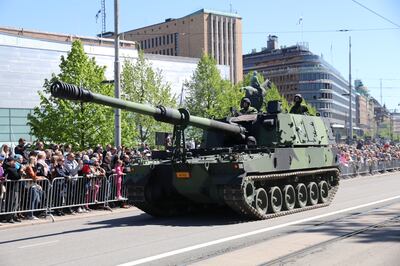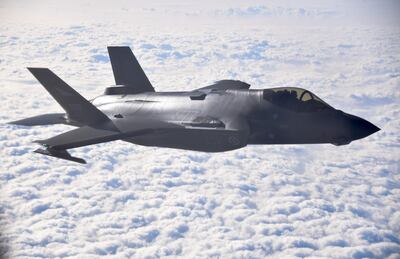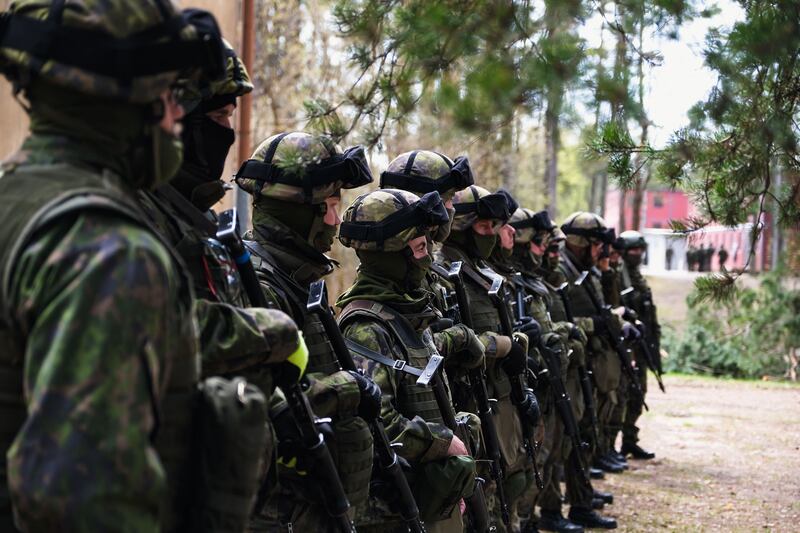Nato will gain a significant advantage in both skills and weapons when Finland and Sweden join its ranks.
Sweden's governing party has said the country will vote in favour of joining the military alliance while Finland is expected to ratify its application on Monday.
Finland’s vast armoury of artillery, advanced jets and warships as well as a highly professional core of soldiers will give the alliance significantly greater punch against Russia, and Sweden brings a smaller but well-regarded force with tanks, infantry fighting vehicles and submarines.
Finland has both a large and effective wartime strength of 280,000 troops, including reservists.
It is also a country that would be difficult to invade, with vast lakes and swamps intersected by large pine forests.
“Finland has very carefully planned out concept of operations for chewing up a Russian invasion — they know their terrain very well,” said Sam Cranny-Evans, a military expert at the Rusi think tank.
“They're incredibly confident and well equipped and they're certainly not adding a burden to Nato.”
He suggested that Finland would probably not require a heavy Nato presence to shore up its defences and that having a large US combat brigade in the country might prove to be a burden.
Helsinki would be more likely to call upon the US for “join effects”, such as providing intelligence and fire support from warships and aircraft.

Finland’s squadrons of F-18 jets are all top-of-the-line, with the ability to fire the highly effective long-range Joint Air-to-Surface Stand-off Missiles.
And its air force will be significantly enhanced when it receives the first of 64 fifth-generation F-35s in 2025 that, along with the F-35s from Norway and Denmark, will make it an extremely powerful aerial adversary.
The war in Ukraine has taught armies around the world the effectiveness of heavy and accurate artillery fire in destroying massed armoured vehicles — and Finland is at the forefront of this doctrine.
Finland has also purchased the South Korean-made K9 Thunder tracked artillery, among the most advanced in the world, which has the ability to fire a shell 53 kilometres.
Unlike Sweden, Finland never scaled down its armed forces following the Cold War. But its Scandinavian neighbour went from 100,000 troops in 1995 to a mere 15,000 in 2018.
Realising the growing threat from Russia, however, Sweden has rebuilt to a force of 23,000 and is spending increasingly more on its defence budget.
With a strong national defence industrial base, Sweden produces high-level equipment, including drones, warships and armoured vehicles.
Foremost among this equipment is the CV-90 infantry fighting vehicles that can power up vertiginous slopes and carry the firepower of 40mm guns along with eight soldiers and three crew members.
Sweden also has the latest German-made Leopard 2 tanks that would, using the right tactics, prove formidable on the European battlefield.
Its force of nationally made 204 Gripen fighters, in addition to being highly capable, are also fully interoperable with Nato warplanes.

The key point is that the Nordic countries will not — unlike some other Nato members — prove a burden to the alliance with outdated hardware.
They will instead be an asset, able to supply self-sufficient battle groups to Central Europe or work in an expeditionary, peacekeeping role in places such as the Sahel.
Both countries also give Nato significantly more territory on which to base troops and as well as ports for warships — particularly useful in for countering the Russian presence in the Baltic Sea and the Arctic.
In essence, Russia now finds itself up against a significantly enhanced Nato that, with its likely new Nordic members, has substantially increased its firepower.
It is also hoped that the new members will increase the deterrence value, making the Kremlin reconsider any thought of invasion.







